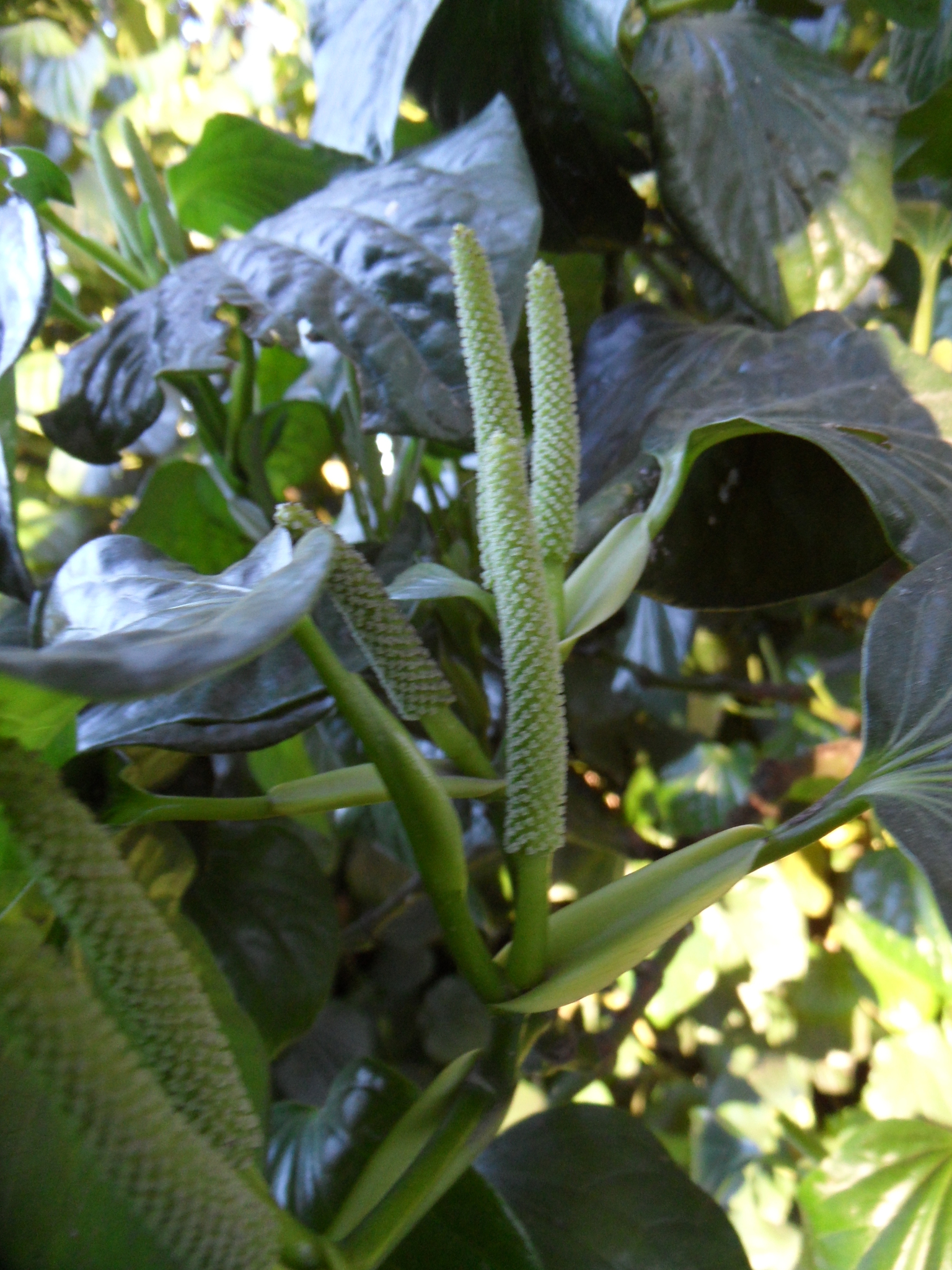
Small trees, shrubs, herbs or occasionally vines, generally with a pungent odour. Leaves simple, mostly alternate, entire often with clear or coloured glands; stipules absent or persisting on stalk. Flowers bisexual or unisexual, minute, solitary or in clusters with a distinctive bract, axillary, terminal or opposite the leaves. Petals and sepals absent. Stamens 1-10 (often in 2 sets of 3), free or united at the base. Carpel solitary, sometimes stalked. Ovary superior, 1-chambered with a single ovule. Fruit a berry or drupe within an elongated spike.
Grown mostly as indoor plants for their attractive foliage. A flower fossil, believed to be 120 million years old was identified in 1989 from a fossil collected at Koonwarra Fishbeds, Victoria; it is among the world's earliest known flowers and resembles a black pepper.
Piper nigrum has many commercial cultivars that are the source of the black and white table peppers. The leaves of P. betle are used to wrap betel nuts (from the palm Areca catechu) which are used like chewing gum in Asia and parts of Africa.
Peppery smell; flowers close-set in elongated spikes.
15 genera and about 2000 species of mostly tropical rainforest with distribution centred in C and N South America (Australia has 2 genera with 10 species).
Yuncker (1972-75), Drinnan and Chambers (1986), Argent (1989).
Source: (1997). Piperaceae. In: . Horticultural Flora of South-eastern Australia. Volume 2. Flowering plants. Dicotyledons. Part 1. The identification of garden and cultivated plants. University of New South Wales Press.
